
click on image to visit Michelle Young's website
Image © Michelle Young 2001
featured artist
Michelle Young
album reviews and artist reflections
progressive music featuring
stunning female vocals
(photographically intensive)
Song of the Siren (1996)
Marked for Madness (2001)
Reviews, Interview and HTML © Russell W Elliot 2001
all images used with permission
Formatted for 800 x 600 or larger windows
Last updated: 07 August 2001
Michelle Young has performed on a wide variety of recordings and is perhaps was originally most well known for her work with the progressive rock group Glass Hammer. Admittedly influenced by Kate Bush, Michelle was professionally trained in classical voice at the University of Tennessee-Chattanooga. She left a former former job as a legal secretary and receptionist in 1996 to pursue music full time and is propelling her professional career as a female vocalist in progressive music. A thoughtful yet brief review of her album and an interesting biography was published in the Fall 1996 issue of Progression magazine. Learn a whole lot more about the artist through an exclusive interview included here.
A featured artist at Musical Discoveries since 1997, this article reviews her debut solo album Song of the Siren, contributions to Rudi Buttas' R.U.D.Y.'s Journey and her follow-up solo album Marked for Madness due for release in September 2001. Already rated by Musical Discoveries editors a must listen, the album includes guest artists include production collaborator Clive Nolan (Pendragon, Arena, Shadowland) on keys, Doane Perry (Jethro Tull) on drums, Stan Whittaker (Happy the Man), Pete Banks (Yes), Karl Groom (Threshold) on guitar and Bobby Kimball (Toto) on vocals. The album contains some very classical sounding pieces. There are a variety of soundscapes, styles and moods on the album and although much darker in places, there is a theme of hope running through it.
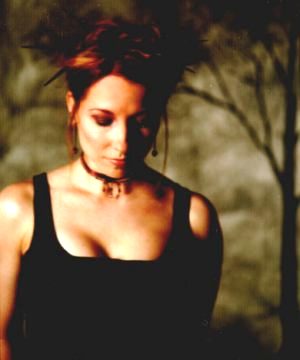 Image © Michelle Young 2001 |
As a full fledged band member, Michelle performed on the first three Glass Hammer albums: Journey of the Dunadan, Perelandra, and Live and Revived. She is most clearly featured vocally in the first of the set. With Glass Hammer, Michelle did primarily backing vocals and support keys, although she did get to sing "The Innocent One" (from Song Of The Siren) during the band's shows and did some of the photography for the first two versions of the Journey of the Dunadan CD booklet. Michelle did the harmonies in the Glass Hammer song "Why I Cry" where the sheer power, range and virtuosity of her voice enabled her to do so without reverb or other effects. She left Glass Hammer to pursue her solo career full time during 1997. She gave music and singing lessons as well.
We asked Michelle to tell us about how she became involved in Glass Hammer. She told us the story. "I first met Steve Babb (D'Arque) and David Carter of the Glass Hammer line up when I was in a restaurant and overheard from their conversation that they were musicians. I walked over, introduced myself, and invited them to come see my recording and photography studio I had just opened recently." Steve accepted the offer and in 1991, Michelle was hired by Fred and Steve to do the photography for their first album Journey of the Dunadan. She continued, "Then, they heard my voice, and really liked it a lot. They decided to utilize it wherever possible on the album, but they weren't sure to what extent that would be, because the album was almost finished. They basically let me make up parts.I even made up the "Oh Elbereth." line. I got to do some strange and tortured sounds on "The Palantir", which I absolutely loved! There were many weird "ambient" vocal sounds that I did that could be mistaken for a guitar or keyboard if you didn't know it was a voice."
The song "Why I Cry" is a classic progressive rock ballad which seems perfectly suited for Michelle's voice. We asked why did didn't sing it. She told us, "Piper Kirk had already recorded the lead vocals on "Why I Cry", so I sang a track of harmony. For some reason they didn't have room to put effects on my track, so it's actually dry." She continued, "I did get to participate in the "Prancing Pony" pub scene, which was great fun. I'll never forget the feeling of excitement when I first heard some of the music, and found out I was going to be included on the recording. I had never heard such a high level of quality and talent in Chattanooga, and I was on "cloud nine" for about two weeks solid—nothing could bring me down!"
Michelle continued to elaborate on her Glass Hammer story. "From there we recorded Perelandra and then the Live and Revisited album. But the debut album is still one of my all-time favorite Glass Hammer albums." She elaborated, "While the sound has greatly improved since then, I feel that JOD contains some of their best melodies and orchestral moments. Oddly enough, my other favorite is actually On To Evermore, the first album they did without me."
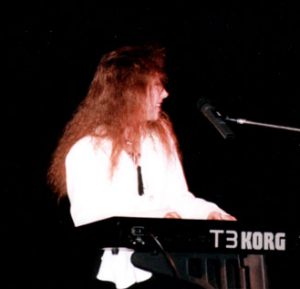 Live with Glass Hammer Image © Michelle Young 2001 |
Michelle recounted the story and her feelings about it, "The tale of Arianna really touches my heart. I feel such empathy for both the sculptor and Arianna. This story contains the elements I find so appealing in other classic myths or legends. A romantic ideal that produces unparalleled creativity, which in turn triggers a magical birth and then the sculptor's dedicated but unrequited love for his creation. He loses his life just as she gains hers—this triggers such emotions."
Tracy Cloud worked with Michelle on Perelandra We asked Michelle about her. She told us, "Tracy Cloud released her Love Changes (review) solo album, which I really like. When I got to see her in a performance, I was singing right along with most of the songs. But, I haven't spoken with her since then, and it's been a few years. I'm not sure if she's still involved in music." Michelle concluded the comments on her work with Glass Hammer, "I really enjoyed performing with them. Fred played all the keyboards on the albums, but live I got to play support keys, and Fred was so patient while teaching me all my parts! But, as the saying goes, all good things must come to an end."
"While I was with Glass Hammer I started recording my first solo album, Song of the Siren. Although I was invited to release it on the Arion label, I didn't want a "monkey on my back" from the very start." Michelle then went on to tell us about the formation of Naosha Records. "I'm very leery about signing music contracts that might hand the control and financial gains over to someone else. I'd have to see a track record that would prove the possible benefits I could receive and then it would be a trade-off. If I knew for sure that a company was going to push me and my product, and had the ability to produce high sales and a great deal of exposure, and that they would handle all the tedious business details—leaving me to just be concerned with the creative aspects—it would be very tempting."
Michelle continued, "In the beginning, I felt that no one could/would push harder than myself. So, I started my own label specifically for the purpose of releasing my solo material, and to this day I believe I made the right choice. It's not an easy task to wear all the hats, doing the business and making the decisions. I find that most successful independent labels have a team of two. One person does the lion's share of the music and creativity, and the other person conducts most of the business. But, there's enough of a cross-over that the two can meld and work together beautifully. After the release of SOS, there was a shift in my musical path. Certain doors started to close, while other doors were opening. I just moved in the positive direction, and that has led me to where I am today."
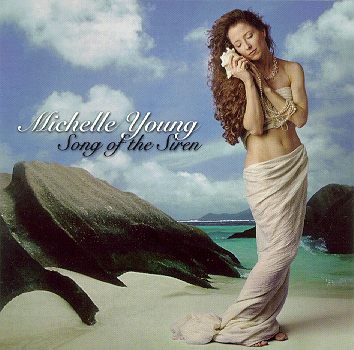 Song of the Siren Image © Naosha Records 1996 |
Song Of The Siren. (Musical Discoveries' Review/August 1998) While Glass Hammer artists Fred Schendel and Steve Babb (DeArqe) co-produce and assist in production respectively as well as perform on the album, this is clearly Michelle's work with an array of styles that surpass the vast majority of female vocal albums in the marketplace today. Here you will find soft ballads, jazz numbers, progressive instrumentals, and typically-Kate Bush sensual female vocal tracks. The strong similarity of Michelle's voice to Kate's is amazing, but Michelle's music works everso much better.
Michelle has written all of the tracks with the exception of one co-written with Fred Schendel and in addition to the absolutely stunning lead vocals, she contributes keyboard, guitar, bass, bamboo flute, silver flute, chimes, and the ocarina and double barrel ceramic flipple. Most likely they are all featured in the new age-sounding ambient track entitled "Bamboo You! (Smackin' the Crickets and Making the Bird Like Me)". There is wide range of other instrumentation—with lots of keyboard—that with the multitracked vocals gives the album an incredible lushness most remarkably heard in the title track.
The overall sound of the album is hard to classify. There are ten average length tracks that meld from one into another and an eleventh very short bonus track. A good friend once said that he'd listen to Annie Haslam singing even if she did nursery rhymes. Michelle Young does just that singing "Mary Mary Quite Contrary" in multi-tracked a cappella in the bonus track. And it works!
While all of the tracks on the album are quite good and work together, there is a spot in the track "Les Talk" where Michelle works up to a crescendo where she shows the full power of her voice that tops every other part of the album. It is here that Michelle's vocal ability shines and sets this album way above anything we've ever heard Kate Bush do and puts her up among the very top female vocalists we've ever heard. The lyrics to the song share a traumatic message Les Paul gave her at the beginning of what then became an enchanting evening where two artists shared their experiences with each other. The song concludes with an unusual telephone recording Michelle captured and some cartoon characterisations. Overall it's a great song.
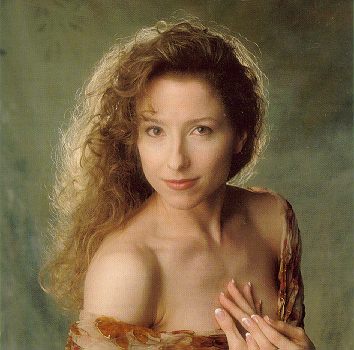 Michelle Young (1996) from Song Of The Siren Image © Naosha Records 1996 |
The first track "Solitude" and one later entitled "The Innocent One" are the most like one would expect on a Kate Bush album, but again, Michelle's voice is much wider ranging and stronger; the multitracked vocal arrangements work well with the instrumentation. Further vocal adaptations in "Big Deal" are also reminiscent of some of Kate Bush's work.
Instrumentally the album is very strong with riffs not far from what you hear in typical Glass Hammer or Yes tracks. Vocal abstractions, a la Glass Hammer, are also featured from time to time. A live number with a jazzy flair called "No Excuses" gives a slight hint at what a Michelle Young gig would be like. It is another example of her power and ability to sustain the notes.
Like Tracy Cloud's album the lyrics are thoughtful and down to earth. Michelle puts incredible emotion into their delivery in the rich production. The attractive sleeve notes reproduce them in detail . Clearly this is one of the very best albums we've heard this year (1998) and we're certain that you'll enjoy it as much as we do.
Michelle has far reaching musical tastes and we discussed her favourite artists. "I really dig Ross Rice, who creates power pop that contains infectious beats and melodies, and witty, insightful lyrics. He's a top-notch musician and songwriter who works with other respected artists, and he deserves much more recognition. I've never met a musician of any genre who's heard his work and didn't like it."
We met Michelle the first time at Clive Nolan's studio and it's not surprising that our conversation drifted onto his work. "Clive Nolan is also one of my favorites. I hadn't heard of him until 1997, when we met briefly in California. But, when I heard some of the work he'd done with Arena, Shadowland, Strangers on a Train (reviews) and Pendragon, I was very impressed. I couldn't believe my luck when I found out we were going to get to meld our talents. I knew it would be magical. Imagine having the highest quality resources available at your fingertips to use in your work—a real dream come true! Not only is he an incredible talent, he is an excellent cook, a true professional, and a wonderful friend." Nolan introduced Musical Discoveries editors to the work of Tracy Hitchings (reviews) and to the directors of Britain's Classic Rock Society.
Michelle continued, "Fred Schendel [Glass Hammer] is another favorite of mine. While working on our first album together, his musical abilities, sensitivities, and versatility convinced me immediately that I was in the presence of a great musical genius. In fact, he and Clive both have their pedestals, side by side in my personal "Hall of Greats," with the title of "Musical Genius" above their heads."
And we also obtained a list of her favourites as our discussion on the subject came to a close. "There are so many others that I could go on and on about, some more known than others. I enjoy listening to a wide variety of music—everything from the Boomtown Rats to the Cocteau Twins, William Orbit, Laurie Anderson, Kate Bush, King Crimson, Adrian Belew, Steve Hackett, Kansas, Thread, Fernandel, Nanci Griffith, Fishbone, Tori Amos, Marco Flores, Landmarq, Happy Rhodes, Arena, Shadowland, Pendragon, Under The Sun, Mozart, Beethoven, Mischa Elman, Queen, Ella Fitzgerald with Louis Armstrong, Paul Revere and the Raiders, Basil Poledouris (Soundtrack to Conan The Barbarian), The Style Council, Rick Springfield, The Jam, Supertramp, Sarah McLachlan, Pink Floyd. I could go on, and on. It seems I usually pick one, maybe two albums from each artist that I keep in rotation. Like, when I think of Pink Floyd, I automatically grab The Wall even though I have The Dark Side Of The Moon, and there are many other great recordings they did."
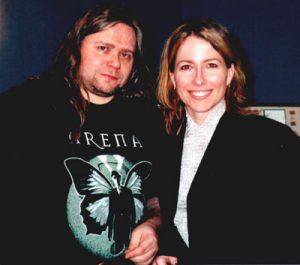 Clive Nolan and Michelle Young Image © Michelle Young 2001 |
Michelle's vocal training and her own inspirations led to the development of her unique style. We asked her to tell us more about it. "I've been singing since before the age of five, and most of my talent is a natural in-born thing. I grew up listening to country music because that's all my parents would let the radio be tuned to, but started listening to a rock station when I got my own clock/radio somewhere in my pre-teens." She continued, "Harmonies were always such a strong pull for me. I used to listen to The Gatlin Brothers on an 8-track with headphones and I would be right inside the recording, singing that extra 4th part harmony that was missing. I wanted to be the extra Gatlin Brother, or more correctly, the "Gatlin Sister." I also loved to sing alto in church, especially since the soprano parts were so high for my young voice at the time that I would almost pass out trying to sing them. I had taken piano lessons in the fourth grade, and had learned to read music at that point, so I could sight sing at church.
"I started participating in talent shows performing in bands, as a solo piano/vocal act, or with a vocal group. Again, my natural ear for music and styles just worked with my inherent vocal abilities, so that I could imitate any vocal style I wanted." Michelle elaborated further on her training, "I attended the University of Tennessee at Chattanooga and sang with a couple of performing choral groups, and, as a music major, took a couple years of vocal lessons. I wasn't a great student, however, because I hated practicing. Or, more accurately, I was too lazy to practice. Instead, I would depend on my natural abilities to get me through the lessons."
She continued, "It seemed that every time I had to perform for my "Seminar" class, my throat felt like invisible hands were wrapped around it, and someone was trying their best to choke me to death. I think I'd handle it much better now, but I couldn't control that horrible adrenaline rush accompanied by cold, clammy hands and shaky knees. My favorite parts of my formal University training were singing in foreign languages, diction class, and getting to compose in my theory class and have the composition performed by classmates. "
"I always took the time to structure and tailor my compositions, so that they would be coherent and appealing, yet fit within the parameters of the assignment. In fact, my theory teacher wound up playing some of my Song of the Siren for some of his later classes, using my music for classroom examples. I was very surprised and flattered to learn this. Again, I lacked the self-discipline needed for studying, and I have forgotten most of the "rules of composition" that I ever learned.
We especially enjoyed how our conversation drifted into Michelle's writing experiences with Clive. "Poor Clive can attest to that fact, and he and I have gone round and round about my music theory in my writing. I mostly rely on my ear, or what I hear in my head." She continued, "Clive will take what I've done, and view it with a more trained ear and eye, and if he hears or sees some "strange" theory going on, he'll analyze it and "fix" it. Sometimes I don't want it "fixed", and that's when we go round and round, which is funny, because we usually wind up doing it his way after all. Then he bemoans all the time and energy it took to get to that point, but I remind him that if I didn't have strong opinions, I'd never get anything done. I am, however, willing to listen to what he says, and can be guided to the "right conclusion" if given time."
We asked Michelle about how other artists may have influenced the development of her own sound. She told us, "Jeff Wayne's musical version of War of the Worlds was my first exposure to rock opera, and that happened my sophomore year in high school. I was so impressed by it that I got the album, the radio album, and now I have the CD as well."
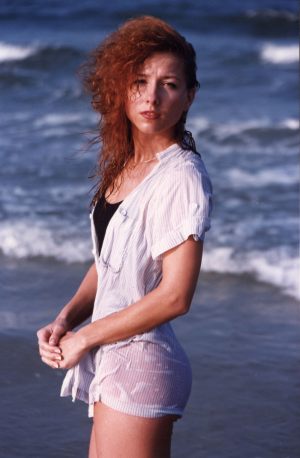 Image © Michelle Young 2001 |
She continued, "Kate Bush is an obvious influence. I was introduced to her music in 1986, but I quit listening after Hounds of Love, except for an occasional spin of some of her older stuff. I get compared to her frequently, but Marked For Madness should help me break out of that 'comparison mode' and into my own vocal identity. At least, I'm hoping so." There were other influences as well. Michelle told us, "Believe it or not, old Disney movies have made an impact on me; mixing a story with music seemed most natural to me. I think a lot of those movies, in addition to seeing live musicals like Oklahoma, have helped shape the theatrical sense of my own music."
"Laurie Anderson opened another window in my world of "storytelling meets music". I definitely absorbed some of the unusual approaches and sounds she incorporated in her Mr. Heartbreak album back in the mid-80's. Danny Elfman's Nightmare Before Christmas has been a huge influence on me. I think it's one of the most perfect musicals in existence—I can't rave enough about it! If I had one person I could choose to meet in the music world, it would be Danny Elfman."
We asked Michelle about what led her to progressive music. She explained, "Glass Hammer was my first working introduction to the world of—and even the term—progressive music. The draw for me is the freedom to create anything I want, without a preconceived formula or form that has to be followed. Creativity is allowed, encouraged and actually required, so it really fits me like a glove. I can mix any sound, any attitude, and any imagery that I want. What more could an artist want? I can bounce between complex and simple at will. I can scream or whisper. I can bang on my violin like a hammer dulcimer if I want while adding distortion. I can be Jack Skellington or any character I want to be."
Michelle told us, "Writing songs is an activity that has several different approaches." We asked her to elaborate and she told us a whole lot more. "Sometimes inspiration comes from dreams, like today I woke up from a dream with a tune going on in my head. I hear the music, and the vocal melodies with all the inflections—even the guitar riffs, bass lines, and drum beats—and I can put any lyrics I like to it. Most of the time lyrics either don't make sense once you've woken up, or they're easily forgotten, so it's best to keep a tape recorder nearby."
Michelle recounted several instances to illustrate the point. "One time I dreamed I was a black girl in her early twenties, sitting in a skyscraper in the middle of a big city. It was night, and the bare office space I was sitting in had solid walls except for the outer corner, which was composed of two huge room-width windows that reached from the floor to the ceiling. I was sitting in a rocking chair wearing a dress, with my back to the windows in the outer corner, rocking. I started singing a song, and my spirit rose from the body, settled in the opposite corner of the room just below the ceiling, and as I 'watched myself' singing this song, my real self realized that I was writing a song. I could hear the music, and the lyrics were so eerie and fantastical that I was amazed. I started trying to remember them as hard as I could. So, of course, at that point I woke up." She continued, "I remember that I was singing about a young girl, and in the song I was describing her, and the only lyrics I could recall were "she was wearing a dress made of lace and the wind, wrapped in voodoo," though at the time I remembered the music—it was eerie too—and I recorded it."
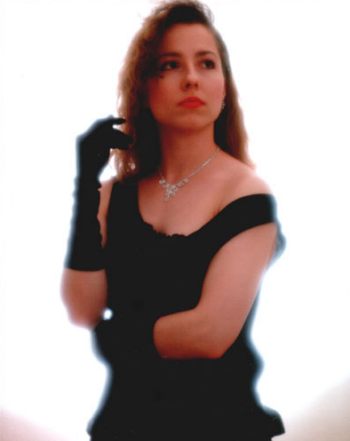 Image © Michelle Young 2001 |
Sometimes writing is full of resolving endless contradictions. Michelle told us, "One time during highschool I dreamt that I was performing in a baseball stadium that was packed out, and for some reason Gary Coleman was playing the piano for me. I never even watched his sitcom and I definitely wasn't into baseball. I had to write that one down by the light of my electric blanket for fear that my parents would see me turn on a light in the night, and come bursting in demanding to know what's going on, and ruin the whole thing."
"Inspiration sometimes come while I'm driving down the road," Michelle continued, "the track 'Mary Quite Contrary' came that way, as well as a country duet I've written called 'It Should've Been You,' and a jazzy torch tune called 'Kiss Me.'" She told us, "Usually I put the new inspirations on a hand-held tape recorder immediately so I don't forget them, because no matter how good an idea is, it can be forgotten, and then you'll kick yourself if you do happen to forget. 'Kiss Me,' however, kept coming to me over a long period of time—even though I had recorded parts of it on the hand-held tape recorder—until I finally wrote it down by recording it with keyboards in my studio. Then it was finally was out of my system and it left me alone." And about the spark of inspiration, she recounted, "I have been known to pull my car off the road to hurriedly scratch some lyrics down, and wrote a whole song like that once."
Michelle continued, "Sometimes in the mornings I'll crank some music, hop in the shower, and then hear something totally different to what's playing. I've written songs that I've 'heard' like that. Sometimes it's a matter of sitting down to play one or several of my instruments—bass, piano, guitar, flute or violin. If it's a keyboard, usually words will start coming if I just open my mouth and start singing." She continued, "A song can take five minutes or five months to write and be of equally high quality. I've been known to put words to music, or put music to words."
"Sometimes I will start an instrumental by just beginning with a base layer, and adding other instruments on top, letting it develop in it's own way. When I was writing the title track Song of the Siren and 'Bamboo You! (Smackin' the Crickets and Making the Bird Like Me),' that's the approach I took." She continued, "Sometimes I hear specific ideas, and just try to replicate the sound I'm hearing in my head to something someone else can hear. That can be frustrating if your resources are limited, or you don't know exactly what it would take to get that sound. But, that's where experimentation comes into play."
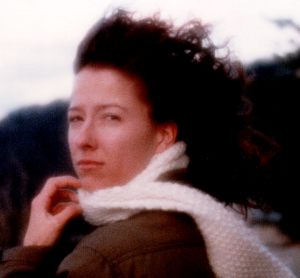 Image © Michelle Young 2001 |
Michelle elaborated further, "During the recording of SOS, I wanted to get a backward reverb effect like what was used on Bram Stoker's Dracula, where Jonathan lies down after hearing the women calling his name. I recorded my phrases 'Come here, Sailor ... come here! It's very nice here...come to me!' on a 1/4" analog reel to reel, turned it over so it would play backwards through my effects processor, sent it through about 28 or so patches, and logged them meticulously so I'd know which one to use." A bit tricky. She continued, "I recorded it onto an ADAT, then recorded the ADAT material back onto the 1/4" analog tape, turned it over again, and there was my forward speaking parts with a backward reverb. Also, we had to be sure not to add reverb to those parts during mixing, or it would counteract the whole effect I worked for."
Michelle has appeared in some video footage and has also done other recordings. One example is singing a progressive kind of French folk with an occasional classical / Gregorian twist on an album recorded in Quebec with artist Normand Gasnier. The CD is being released independently. Michelle has also done vocal and instrumental work on Greg Hunt's first two albums, Enter the Oreiente and Hidden Landscapes. Michelle takes engineering credits for Greg's first three albums and learned to make bamboo flutes—used on Song Of The Siren—from him as well.
Michelle has done other recordings with other bands from the past but these may not be highly accessible to the public anymore. She performed with the rock and blues band American Flyer doing mostly festivals and events at the end rather than clubs and bars as they did earlier in their career. She also provided vocal parts for Jabberwocky by Clive Nolan and Oliver Wakeman. Released by Verglas Music in January 1999, it is a keyboard-based prog concept album with an array of guest vocals. Oliver's father Rick provided the narration used within the album. A follow-up is in the works.
We asked Michelle to tell us about her 'side' projects. "I sang on Glass Hammer’s first three albums, Journey of the Dunadan, Perelandra, and Live and Revisited, Normand Gasnier’s progressive folk solo album (French, out of Quebec), engineered and performed on Greg Hunt’s first two albums, had "Solitude" from SOS included on Empire Music’s The Art Rock Collection, Volume 2, recorded on Rudi Buttas’ solo album R.U.D.Y.’s Journey (review), an album by the guitarist for the famous German rock band PUR, which includes me singing two duets with Mike Sadler from Saga, sang backing vocals on Jabberwocky (review), an album by Clive Nolan and Oliver Wakeman, which includes Rick Wakeman doing narration, Pete Banks on guitar, Bob Catley and Tracy Hitching on vocals, and others, Leonardo…The Absolute Man, a rock opera by Trent Gardner on the Magna Carta label, singing a duet with Steve Walsh (Kansas) and also singing with James LaBrie (Dream Theater), and am working on a song for Oliver and Clive’s upcoming project based on The Hound of the Baskervilles."
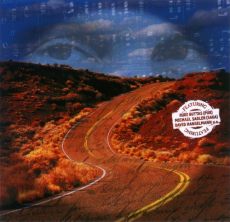 R.U.D.Y.'s Journey Image © 2001 SB Records |
R.U.D.Y.'s Journey. The debut 'solo' album by Rudi Buttas (Pur) entitled R.U.D.Y.'s Journey (SB Records (Germany) 4019 1 0919919 4, 2001) is comprised of 14 pop-oriented rock tracks. Joined by Michael Sadler (Saga) and other various artists, the album is extremely well produced, highly accessible and will naturally attract a broad listener base. Michelle played early demos of the material to our editors over a year ago. She sings lead on four of the album's tracks and contributes to several others.
R.U.D.Y.'s Journey opens with the upbeat and rocking "Long Day's Journey" sung by Michelle Young. We were instantly reminded of her work with American Flyer. The producers mixed the level of Michelle's vocals way up so she's out in front where she belongs. Supporting instrumentals and Michelle's accompanying harmonies work extremely well. Michelle's soaring 80s rock style drives the texture of the track "Mona." Her power, range and obviously well-trained style work well against the rocking guitar-based arrangements.
Michelle's evocatively sung lead vocal in "Harder Day" includes layers of backing harmonies and richly produced supporting instrumentals. Various styles within the song were vocally reminscent of her debut album Song of the Siren and Marked for Madness. We especially enjoyed Michelle's duet, vocalise and harmony vocals accompanying Mike Sadler in the gently rocking ballad "One More Chance." In another ballad entitled "Peter Pan," Michelle takes the lead, singing in a style similar to her most recent solo demos, supported this time by Mike Sadler. The lush vocal arrangement includes a soaring lead and richly produced backing harmony layers. The two vocalists compliment each other quite well.
 Image © Andrea Meister 2001 |
Sung by Mike Sadler, the album's signature tune "Radio" appears in both single-edit and a longer version. Upbeat and a highly accessible classic rock track, it has a tremendous hook and is likely a certain favourite once it hits the airwaves. Another highly accessible rock track, "Friends" is similarly arranged for Mike Sadler's vocal lead. Backing harmonies include contributions from Michelle Young. Other ballads on the album include the heartfelt "Breath of Life" sung by Mike Sadler, and "Blindman" sung by David Hanselmann. He also sings the soft and accessible rock tune "Fly."
R.U.D.Y.'s Journey is a very enjoyable rock album of broad appeal with vocal contributions from both male and female singers. Certain highlights for Musical Discoveries' readers are the stunning tracks sung by Michelle Young. Interested readers will want to watch for live performances of the project during 2001. Further information, photos and soundbites are available at Rudi's official website. Available currently amazon.de (Germany), this album is worth a trans-Atlantic journey and quite clearly is a must listen!
Leonardo-The Absolute Man. In between Michelle's work on R.U.D.Y.'s Journey and further sessions on her new album, she contributed extensively to the Trent Gardner (Magellan) project Leonardo - The Absolute Man (Magna Carta (USA) MA-9029-2, 2001). The album is marketed as an "original cast recording" because Gardner envisions eventually taking the project to the stage as a rock opera. Gardner said, "it is a mix of cinematic progressive rock, symphonic rock, progressive pop and progressive metal, graced and articulated by true classical music and the theatrical scope of state-of-the-art soundtrack or dramatic stage music."
Michelle plays Leonardo's mother Catarina, a young peasant woman outcast from DaVinci family life, who is permitted little contact with her illegitimate child. While her role drifts in and out through the project, her featured track is the ballad "First Commission," a stunning multi-tracked duet sung with Steve Walsh (Kansas). Michelle's sweet vocals effectively blends with orchestral and acoustic arrangements and quite notably contrasts Steve's part. Michelle's fans will also recognise her backing vocals which appear throughout the album.
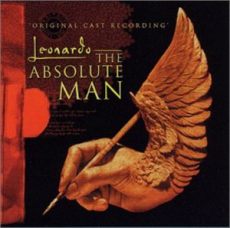 Image © Magna Carta 2001 |
Michelle's story of 'the making of Leondardo' is actually riddled with interesting technical details. She told us about it, "When I was placed in the role of Caterina, I had the option of recording wherever I wanted. I decided to record in my own studio, since I had a newer ADAT—a 16-/20-bit Alesis LX20—and had borrowed an older black-faced 16-bit Alesis ADAT unit. Not only did I have 16 tracks to work with, I had my secret weapon: a 1953 Neumann M49 tube microphone with a Telefunken V72 tube preamp—a beautiful combination that is perfect for the female voice."
She continued, "I had received the script and the tape from Trent, and was in pretty close contact with him, wanting to be sure I got everything just the way he wanted. I spent about ten hours straight doing my vocals, and excitedly called Trent to play him some on-the-fly mixes over the phone just to be sure he was happy with it before I sent it off. He was excited to hear it too, but was in the middle of a project in his own studio, and asked me to call him the next day to play the impromptu mixes."
Things started to go wrong. Michelle told us, "I called the next day and started trying to do the mixes. But, as fate would have it, my newer LX20 wigged out. I hadn't moved it, bumped it, or even changed any of the cables coming out of it; it just started giving error messages. Then, if it did play something back, it would not play back several of the tracks, or it would play them a second or two, and then drop out. I freaked. I couldn't be sure that the 'missing' tracks were still there."
"Trent and I tried to troubleshoot it, but at the end of the day it was just in need of a repair - it was no good at that point. Now, as if that wasn't trouble enough, I realized that I had formatted the tape for the LX20 at 20 bits which is the default setting if you don't hit 'format' twice, and the older units won't play those tapes. That meant Christmas Eve I had to call everyone I could think of to find a replacement. Scheduled to leave for England to work on Marked For Madness in just three days, I was a nervous wreck, and very desperate! I couldn't send out the original tapes to Trent without having backups, and I had to be sure all the tracks were still there and I also needed to make a rough mix."
The album is a testament to the silver lining that concludes the story. Michelle told us, "I wound up having to buy a new ADAT—a forced upgrade to my studio—just to get the tapes out the door. The real kicker is that Trent didn't have immediate access to the newer 20-bit units either, so he had to resolve the 'compatibility issue' on his end. I learned my lesson: all my tapes get formatted at 16 bits now!"
Michelle has been working on Marked for Madness for some time and has had demo material available at mp3.com for well over a year. We explored the writing process with Michelle at length. She began, "On MFM, I brought all my current demos of potential material with me on my second trip to England. Clive and I were going to finish writing the album we had started writing my first trip over, but before we started I wanted him to hear some of the things I had been working on for my next solo album."
She continued the story, "He started making suggestions, and said 'well here, let me show you' on one song, and the next thing we knew we were working on MFM instead of our co-written project, and it was quite natural and okay. The hardest part was taking my precious creations that held my ideas, handing them over to the producer's chopping block, where Clive could take and chop, hack, cut, tear, and mend, glue, and place everything back together in what he deemed a more "workable" form. Some songs were transformed more than others, and sometimes it wasn't so painful. But he and I went round and round so many times. It was truly a stressful part of the process."
Michelle told us how she felt about this new experience, "I tried my best to hand the producer's hat to him as quietly and gracefully as possible, but sometimes it was just too much. At the end of the day, though, I can look back and say it was worth it! and I'm glad I had the strength to hand it over. In a way, this is now as much 'our child' as it is mine. I liken it unto childbirth—there's the conception of the idea, the gestation period of recording / mixing / mastering, giving birth—the pressing and then presenting your child to the world—the album release. You'll be stuck with that child / album for the rest of your life, so it had better be as good as you can get it."
"In between two of my trips to England, I wrote 'A Lively Toast' and 'Dancing On The Head Of A Pin.' We had already outlined the song list, and several songs that were originally the reason MFM was written had been cut out. There was just too much material." Michelle continued, "I just had to bring these songs in. I had already told Clive about writing them, and we both realized that it would be time-consuming to cut more songs and replace them with these, where he'd have to sequence all the parts from scratch. All the bass, drums, and guitars would have to be replaced later by live instruments also. But when he heard them, he agreed with me that they belonged on the album and we worked them in. After that Clive's parting warning became, 'No more songs! We've got to move along!' And, of course, I agreed, but I didn't stop writing." She concluded, "It's just that the new material I'm currently writing will probably end up on my next album. Yes, I already have an idea of what I want, and I have several songs started, but right now I need to concentrate on finishing Marked for Madness—that is, the artwork, pressing, etc.—and getting it out to the public. Then I'll start on the next one."
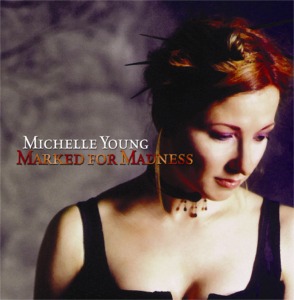 Marked For Madness (Front Cover) Image © Naosha Records 2001 |
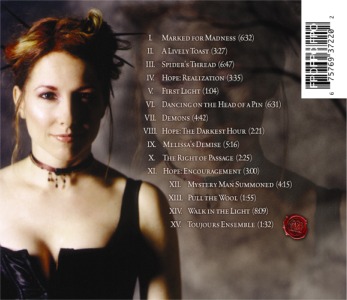 Marked For Madness (Back Cover) Image © Naosha Records 2001 |
Marked For Madness. Michelle's second album builds significantly on her debut and is the dedicated culmination of four years' of international travel and collaboration. The final result, mastered at Abbey Road Studios in London, is comprised of fifteen cohesively produced tracks firmly planted in progressive rock but with impressively broad appeal. Darker in spots than Song of the Siren, effects introduced on her debut have been carried onto the new recording. A real air of hope emerges from the most orchestral and symphonic numbers. The album's title serves equally as its theme, incredibly delivered in words, music and other acoustic effects. Although samples of the album's very early demos can be heard at Michelle's mp3.com website, readers should note that the final production is substantially improved.
While Michelle can still be compared vocally to Kate Bush at times, the songwriting and instrumental arrangements on Marked For Madness transport her work a distance from the 80s hit maker into the world of song-based progressive rock. The dramatic title track that opens the album is the first to support this assertion, evocatively varying moods with vocal, instrumental and other effects to deliver the album's message. Dramatic effects and the stunning guitar solo during the instrumental bridge clearly separate the project from 'other female vocals' albums—this is a progressive rock album right from the start.
The album's dramatic theme builds with the hauntingly rocky tune "A Lively Toast." Layered vocals and instrumental arrangements are as eerie as progressively rocky with effects and distinctly different keyboard passages breaking a traditional verse/chorus pattern. Lushly arranged, blending choral, woodwind sounds and chimes with violin samples, the dramatically performed "Spider's Thread" also includes tremendous vocal work, projecting the power and range of the artist's talent. The album's first instrumental is the brightly produced symphonic number "Hope: Realization," orchestrally echoing both bright and dark themes heard elsewhere on the album. The track blends naturally into the everso short track "First Light" featuring Bobby Kimball's vocals.
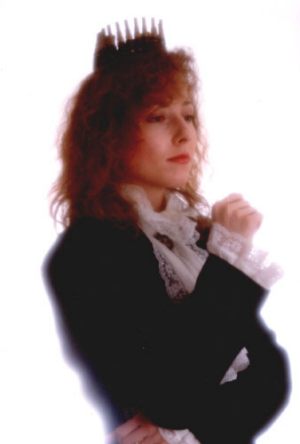 Image © Michelle Young 2001 |
Thunder clap effects underscore Michelle's evocatively soaring vocal introduction to the rocking keyboards and guitars in "Dancing On The Head Of A Pin." The dramatic contrast between lead and backing vocal elements as well as the robust keyboard solos are most notable. Layers of vocals and eerie cinematic textures perfectly suit the haunting lyrics and richly produced symphonic passages of "Demons," one of the album's certain standout and defining tracks. The theatrical style instrumental "Hope: The Darkest Hour" blends various musical sounds with special effects and various spoken contributions perfectly suited to introduce the stunning "Melissa's Demise" that immediately follows. With both rock with jazz elements, layers of lush vocals join acoustic and electric guitar and tremendously produced percussion to evoke contrasting emotional responses corresponding to the song's message.
Michelle's compositional strength is clearly illustrated in the layered classically oriented instrumental "The Right of Passage," with violin samples arranged by Clive Nolan. Acoustic guitar and stunning lead vocals fill "Hope: Encouragement;" backing vocals, choral elements and lushly arranged symphonic keyboards contribute as the theme develops. "Mystery Man Summoned" is a theatrically performed number with spooky lyrics perfectly supported by the dramatic carnival-style instrumental arrangements, backing vocals and supporting sound effects. A variety of different spoken vocal contributions begin the track "Pull The Wool" as crisp finger snapping percussion supports the layered vocal track. A brief symphonic passage concludes the track.
Marked For Madness begins its conclusion with "Walk In The Light," a lovely bookend to "First Light" which appears much earlier in the recording. A cross between sensitively sung ballad and progressive rocker, this dramatic number builds instrumentally and vocally to a marvelous symphonic crescendo, before returning to its delicate beginning and final dramatic conclusion. Layers of stunning vocals are perfectly complimented by a richly produced arrangement. The album closes with the everso delicate ballad "Toujours Ensemble" (Always Together). Sung in English and French the vocal layers perfectly accompanied by acoustic guitar and piano effectively deliver the theme 'always together in the music.' This album is most certainly worth not only a trans-Atlantic journey, but a journey to the moon if necessary—a must listen!
The story of the making of Marked for Madness is one that spans the globe and several years of hard, extremely dedicated work. Michelle began, "Doane Perry did his drums in California. I first met Doane in Baltimore, MD at a Jethro Tull concert I drove up to see. He's a wonderful man with a very friendly and cordial personality, and he is enthusiastic about his work. Standing beside me he looks almost like a giant. But he's a gentle giant that can manhandle the drums to get them to say whatever he wants. Every real musician that hears his drumwork on my album compliments his playing—and that says a lot!"
Michelle continued, "Stan Whitaker did his guitar work in Virginia, where I drove to engineer him. I met him at a ProgDay in North Carolina, and he was so kind to me there. He moved from California shortly after that event to reunite and live with one of his Happy The Man bandmates, so he loaded up his bird and guitars, and set out across the country to Virginia. He was a studio musician in CA, and after working with him, I could see why he was in so much demand. The guy picks up music quickly, and accurately, and plays real melodies instead of substituting arpeggios for creativity. I was duly impressed!"
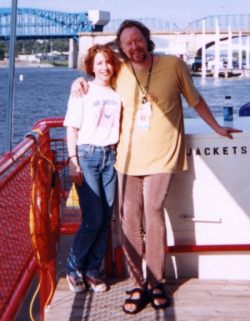 Michelle Young and Doane Perry Image © Michelle Young 2000 |
"Bobby Kimball did his vocal work in Nashville. I first met Bobby when I was invited by the Classic Rock All Stars—Mike Pinera/Iron Butterfly, Blues Image, Peter Rivera/Rare Earth, Jerry Corbetta/Sugarloaf, and Dennis Noda/Cannibal and the Headhunters—to sing backing vocals for them at a Riverbend Festival. My band American Flyer had opened for them the previous year, and they guys really liked my vocals. I had even sang with them at a performance in Arkansas. So, sometimes Bobby would join them for a gig, and this happened to be one of those times. I found myself singing backups on 'Rosanna' and 'Africa,' with a surprise appearance from David Hungate—what a moment! I was performing songs I had heard on the radio, with the guys who originally put them there! Bobby and I started talking, and we decided to do his vocals while he was in Nashville recording on another project. At the end of the day, it all worked out to where you hear his distinctive and powerful voice singing Walk in the light! on 'First Light.'"
"Jon Colston recorded his guitar work in Chattanooga. I first met Jon at a jam session in a place called The Crosstown Bar and Grill. We walked across the parking lot to the Wafflehouse afterwards, ate a fine meal, and proceeded to share musical ideas. Jon is a very talented guitarist who derives much of his inspiration from Steve Morse. He takes the rock approach to most of his guitar work, but is capable of creating many moods on the guitar. Jon is a very generous and dedicated musician, and I wish him all the best in his own career."
Several of the parts were recorded at Clive Nolan and Karl Groom's Thin Ice Studios in Surrey, England. Michelle told us more, "Karl Groom doesn't mind working to get the right sound or approach. If you were to hear his band's music (Threshold), you'd never know there was such a calm person behind that guitar!" She continued, "I first met Pete [Banks] when Clive was compiling his songs for the album Can I Play Something For You? We got along very well, but I managed to stick my foot in my mouth while talking with him, and embarrassed myself to the point I had to leave the room." Michelle continued, "Fortunately, he wasn't offended, and he told me later that if I ever needed some guitar parts to let him know. How could I turn down that offer? He brought his new bride on the day of the recording, and proceeded to lay down some great sounds. He's also a hard worker, and would do a take until he felt satisfied with it. I'd just explain what I wanted to hear, and he'd get his mojo working—and voila—we got it!"
"Peter Gee (Landmarq) was a part of the Shutteroaks household when I first arrived, and he's the only one still renting there. Peter is normally a very quiet person, but if you can strike up a conversation, he has some very insightful views on life. He was an excellent choice for bass guitar, and he filled the tracks with just the right amount of playing—nothing over-played or understated—just right!"
"Clive Nolan also recorded his keyboard tracks and did his arrangements at Thin Ice. He is one of the most talented people I know, and he can have great sensitivity—though he wouldn't want to admit it—when dealing with other musicians. I can't say enough good things about him, so I'll just say that he is a Godsend to me, and I look forward to working with him as often as possible in the future." She concluded, "The rest of it was recorded in England, and it was mastered in England at Abbey Road Studios." The result is absolutely stunning.
 with American Flyer Image © Michelle Young 2001 |
This online article displays images from the Song of the Siren artwork as well as the new Marked for Madness album. We asked Michelle to tell us all about the making of the artwork. She told us, "When it came to making the cover for Song of the Siren, I wanted to get the feel of Botticelli’s "The Birth of Venus". I hired a local photographer of the highest credentials and reputation, and we shot against a blue screen, where a computer generated backdrop could easily be dropped in. I supplied the props…I had the material that was draped around me left from my own photography studio. I had to get some people in Florida to send me some conch shells, because I couldn’t find any here, but I did buy some smaller shells at a local craft store…heck, I bought about ten baskets full." She continued, "I then proceeded to sort through them, and picked the finest ones. I wound up hand painting gold trim meticulously on individual shells of various shapes and colors…some were used in the photography on the back of the album, and others I sold as novelty merchandise to go along with the album. They were so pretty! I still have some left…they may surface yet again someday."
Michelle told us about the artwork for Marked for Madness, "Because the artwork for SOS was so striking, it received much commentary and many compliments. I knew that for the second album it would have to be at least as good, if not even better. So, I scoured the Internet for photographers in Atlanta. I figured that would be a close enough location that I could get there easily, but it would lend me a large pool of talent to choose from."
Michelle continued, "I saw several portfolios on the Internet, and wound up choosing a guy named David Stuart to do the photography. I saw a certain quality and creativeness in his work that compelled me to work with him, even though that meant blowing my budget out of the water. We talked at great length about what I wanted for the cover…to convey madness, but not like Pat Benetar in a straight jacket. I tried to get him to watch Bram Stoker’s Dracula, so he could see the storm/nightgown scene, and get an idea of what I wanted…movement, and beauty against a moody background…and with a 'period' feel."
"The day of the shoot came, and we shot for twelve hours. The make-up artist and the stylist were wonderful ladies, and we all worked together with the photographer to try to bring our ideas to a visual reality. I was sort of swept through the day, and by the end I was pretty exhausted…and in pain from accidentally getting burned while a dress I was wearing got steamed with me in it. Also, we decided to shoot some of the shots in a corset, which means I was taped up for the first time in my life. And…probably the last. When we removed the tape, the stylist and I were both screaming…she in sympathy for me, because an entire layer of flesh came off with the tape, and I had a red stripe around my torso for two or three days. In fact, in a couple of places, more than one layer came off, and I was left with actual wounds that had to heal. Talking about suffering for your art!"
In early September 1999 Michelle performed at ProgDay in Chapel Hill, North Carolina. After a lengthly drive to the event and power nap, she was invited to play between band performances doing a mini-set that was very well received. Those in attendance had were blessed with the opportunity to see and hear Michelle perform live. She used backing tracks to cover and improvise Tori Amos' "Leather" and "Silent All These Years" and faithfully reproduced Kate Bush's "Man With The Child In His Eyes.
Concert goers were also treated to a sneak preview of "Spider's Thread" from the new album. Michelle played keys while singing the stunning ballad "Glimmer of Light" from Jabberwocky and an abridged version of another new track entitled "Five's the Limit" written for but omitted from the current Marked For Madness lineup. The songs were well received by the audience with "Glimmer" and the covers receiving lots of positive comments, and there was equally intense interest in the new album.
 Photo Phil Luckey Image © Naosha Records 2001 |
We asked Michelle to tell us about her live performances. "If you’ve only heard my recordings, and not seen a performance then you’re missing out! I can’t fully relay the energy that is given during a show, but I totally get into the music, and the audience can see I’m having a good time, and that makes them have a good time too. I’m a born entertainer, and a big ham! I love the audience rapport…I’ll look them straight in the eyes, point to them, wave at them, talk to them, laugh with them, and then pour my soul out for them…and they appreciate that."
She continued, "When I was playing with American Flyer, that gave me the opportunity to play various types of music, including some of my originals. Even if the audience isn’t familiar with the songs, they are so catchy and well presented that the people inevitably find themselves tapping their feet, nodding their heads, clapping and even dancing. I’ve been known to throw total strangers together and make them dance. I've also lain on my back beside my guitarist playing my bass on stage. I've jumped around, strutted, and gyrated in high heels, knee high boots, and American Flag Converse tennis shoes. I’ve lost earrings and hair accessories because of wild head movement. I’ve dragged people out of the audience to sing along with me and I’ve even had my guys jumping up and down on stage at my request. You never know what will happen! You’re just guaranteed a show, and that, my friends, is entertainment!"
There is currently not a lot of video material available, but Michelle commented about it for us. "I’ve had some live performances video taped, especially recently during my 2001 Riverbend Festival appearance. Most of the time you just get the 'monkey cam,' but I think there’s some good footage available from this last show. There is also some amateur video footage circulating out there of me performing with Glass Hammer. The video we shot of "Kiss Me" will be made available to the public at some point as well."
Michelle added, "Here’s a challenge for those people who love to be challenged: somewhere out there, if you can find it, is a promotional video for The University Of Tennessee At Chattanooga, which was made about ten or so years ago. I was one of the three featured students. They showed me playing piano, walking, and eating ice cream—I was their "artsy" student representation. And also, somewhere in the world is the unfinished footage we shot for a song off Journey of the Dunadan, where we’re all dressed in period clothing, and the ladies are skipping through the forest. I don’t even have a copy of that one!"
We asked Michelle about the impact of the internet on her music and her career. She told us, "The Internet has been a very important tool for my career. That’s how Rudi Buttas was able to locate me: his agent sent inquiries to a company in Chattanooga, and they helped him contact me. It’s also helped me complete interviews and articles, transfer artwork, research information, and contact distributors."
She continued, "Another other great thing about it is if I meet someone and they ask about what I do musically, I can direct them to my site without having to go over a whole list of projects I’ve been working on. It also affords them the opportunity to hear some of my music risk-free, so they can decide if they like the music before they buy an album."
Michelle concluded, "I’ve had a couple of other progressive musicians contact me via the internet, which opened up the possibility of a working relationship with them too. Otherwise, I may have never had the opportunity to speak with them. I’m not sure if I’ll win new fans because of my site, but it does help me share information in a professional manner, allowing people to both keep up with my career and contact me at their convenience."
Michelle Young's latest album Marked For Madness, years in the making, is certain to propel her to the forefront of female-fronted progressive music. With a promotional video recorded, improved distribution arrangements, internet coverage and live performances being scheduled, Michelle's recordings will gain further exposure. Enthusiasts of progressive rock and female vocalists alike are certain to be delighted by her latest recordings, each one a must listen!
Return to website contents